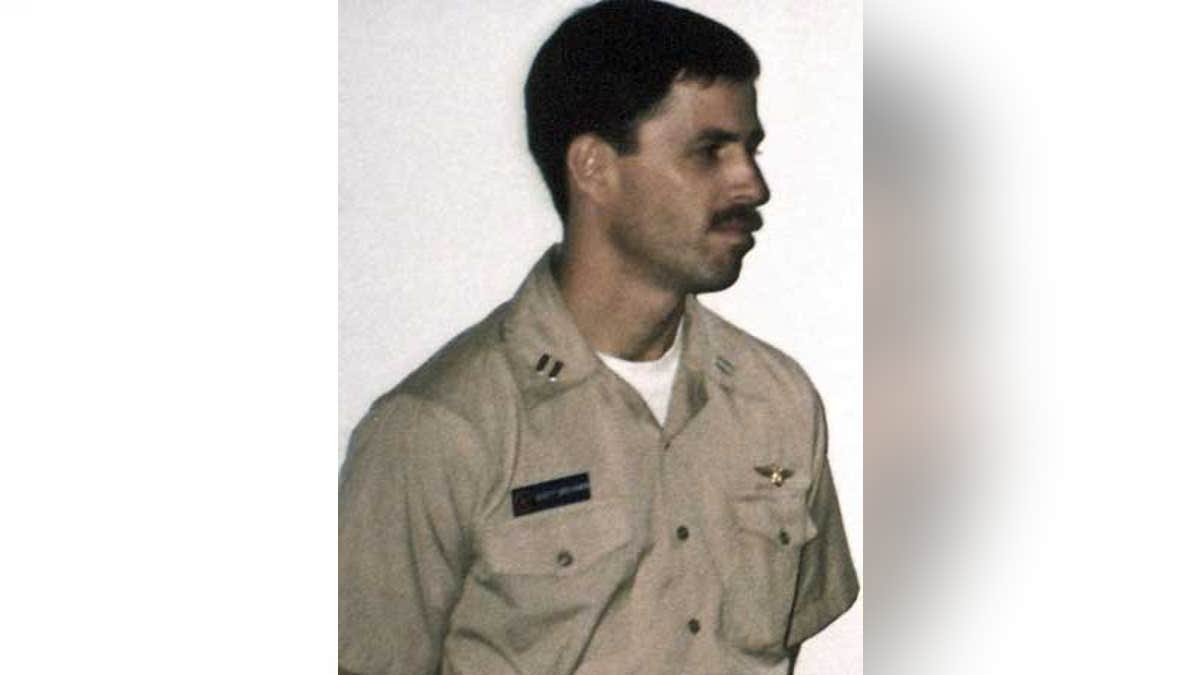
June 18, 1990: Michael 'Scott' Speicher aboard the carrier USS Saratoga when he was promoted to Lt. Commander. (AP)
JACKSONVILLE, Fla. – The family of Michael "Scott" Speicher received the first of a series of top-secret briefings Tuesday about the discovery of his remains in Iraq, 18 years after his Navy plane was shot down on the first night of the 1991 Gulf War, their attorney said.
Cindy Laquidara, an attorney representing the family, also announced Tuesday that the Navy pilot would be laid to rest in the Jacksonville area, where he lived with his wife and two young children before his plane went down while on a combat mission on Jan. 17, 1991. He has been called the first casualty of that war.
"This was Scott's express wish," Laquidara said, adding the family is planning a public and private services. She said a service would not be held until at least next week because DNA tests on the remains recovered from a grave in Iraq are still being tested. His body was initially identified through dental records.
Family members spent several hours with Defense Intelligence Agency officials Tuesday, hearing about the recovery of the pilot's body by a group of Marines who received a tip from an Iraqi about the location of a grave.
"We are still reconciling data about what happened with Scott," she said. "We have finished reviewing some of the information gathered. We can't close this chapter until we can tie this up."
She said the family is still trying to figure out how, when and where Speicher died. They have asked for more briefings with specific officials.
The family is considering both the new Veteran's Cemetery or a large public cemetery, Laquidara said. A marker with his name was placed in Arlington National Cemetery several years ago.
Officials don't expect to completely solve the mystery of how Speicher died because the remains are only small fragments.
For nearly two decades, Speicher's family, from outside Jacksonville, Fla., pressured the Defense Department to find the missing pilot. Finally, the Pentagon announced Sunday that his remains had been discovered.
Defense officials declared Speicher killed in action hours after his plane was shot down over west-central Iraq. Then-Defense Secretary Dick Cheney announced on television that Speicher was the first casualty of the Gulf War.
However, Speicher's family disputes the presumption the pilot died while ejecting or in the crash, the attorney said.
Ten years after the crash, the Navy changed Speicher's status to missing in action, citing an absence of evidence that Speicher had died. In October 2002, the Navy switched his status to "missing/captured," although it has never said what evidence it had that he may have been in captivity.
Over the years, critics contended the Navy had not done enough, particularly right after the crash, to search for the 33-year-old pilot.
The military recovered bones and multiple skeletal fragments, and Speicher was identified by matching a jawbone and dental records.
The Armed Forces Institute of Pathology in Rockville, Md., is running DNA tests on the remains and comparing them with DNA reference samples from family members.
